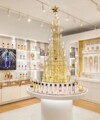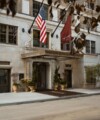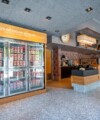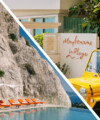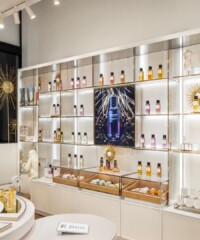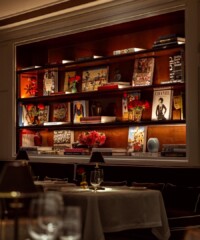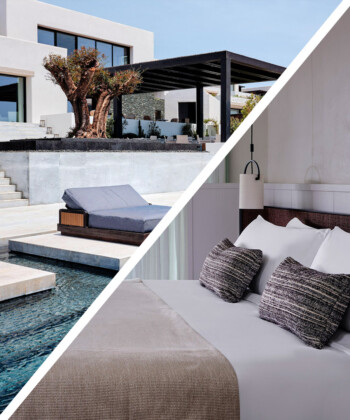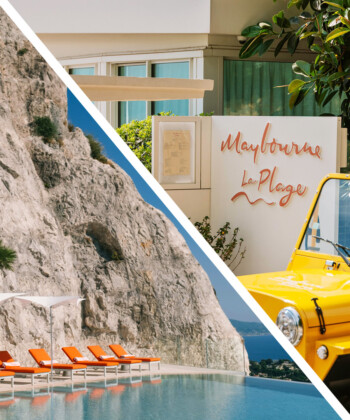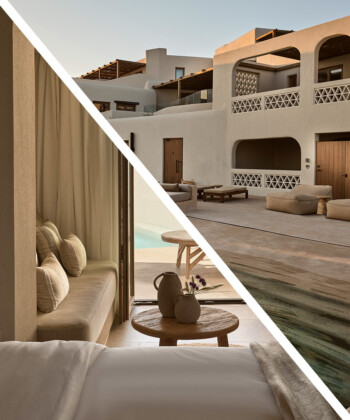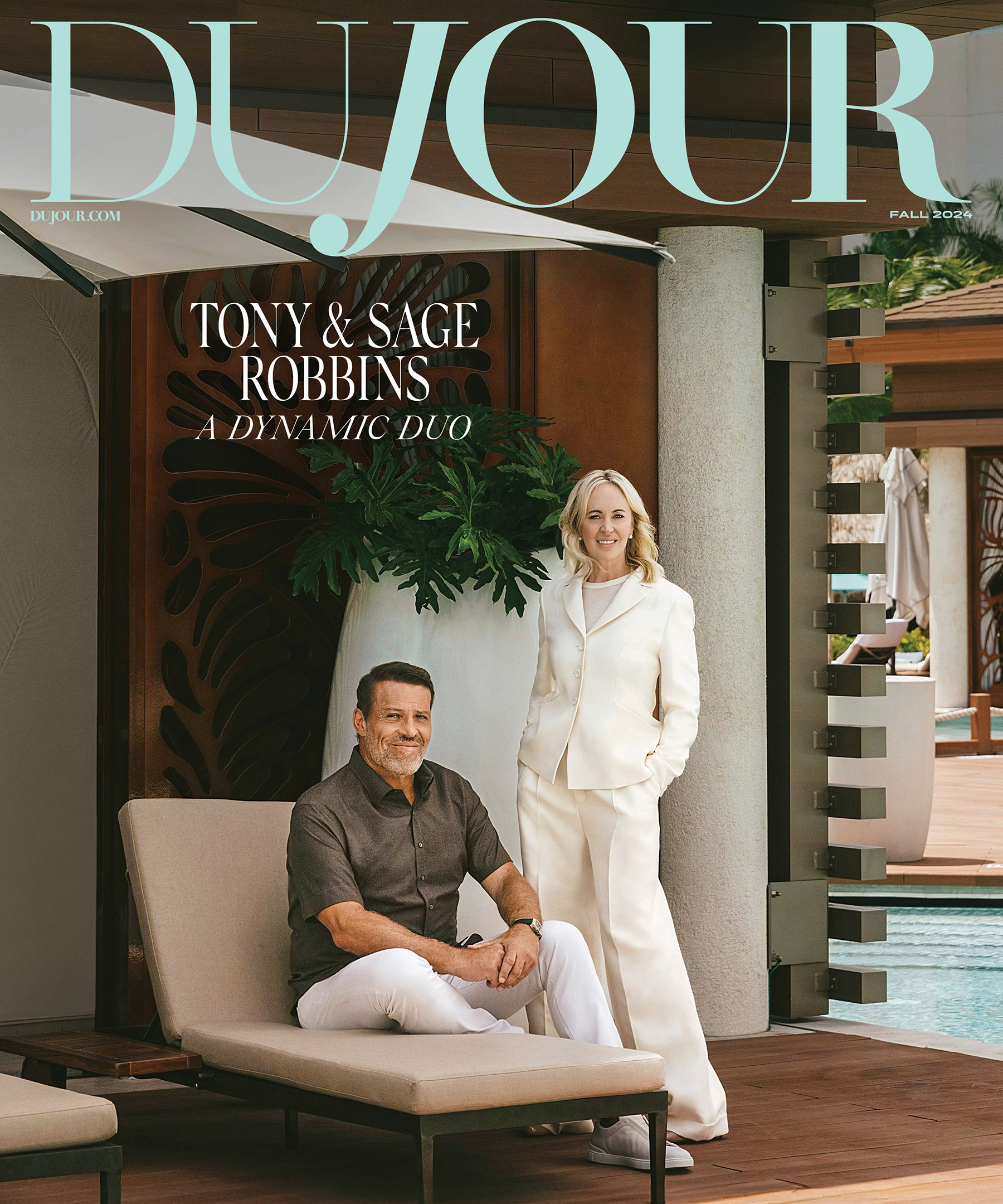Visit the town of Rodez, in the fertile and hilly Midi-Pyrénées region of southern France, and you’ll notice that two entities seem to loom large. One is the cathedral of Notre Dame, an imposing Gothic edifice hewn from the region’s signature red sandstone. The other is the artist Pierre Soulages, a renowned Rodez native who’s still painting at the ripe old age of 94.
On May 31, the city unveiled a major shrine to this living legend: the Musée Soulages, a 6,000-square-meter space devoted almost entirely to his work. Built by the Catalan firm RCR, it’s a major cultural addition to a region where most of the notable art on view up until now has been centuries (if not millennia) old. French president François Hollande even attended the opening.

Pierre Soulages
Soulages, one of the last living pioneers of mid-century Abstract Expressionism, is more celebrated in Europe than in the States. He was the subject of a 2009-10 retrospective at the Centre Pompidou and is the only artist to have a show at the Hermitage while still alive. His canvases fetch massive prices. An exhibition this spring at New York’s influential Dominique Lévy Gallery has helped put him back in the spotlight stateside, restoring to his name some of the currency it had 50 or 60 years ago, when his work was being shown alongside that of Rothko and Franz Kline and collected by the likes of Alfred Hitchcock and Jane Fonda.
The museum, though, would seem to be the ultimate profile-raiser. A series of rectangular volumes connected by glass-walled corridors, the building is set into a grassy hillside, and on the entrance side (which sits inside a several-acre park) seems almost to be buried into it. The oxidized steel echoes the rust tones of the cathedral, an eight-minute walk away.
Inside, dark galleries reflect Soulages’ somber, earthy palette. Thanks to $50 million or so of donations from Soulages and his wife, the holdings amount to the world’s largest collection of his work, from his early landscapes and the “walnut-stain” paintings that first got him noticed to his prints and large-scale canvases. Inside the 500-square-meter temporary gallery, an exhibition of the outrenoirs (“ultra-blacks”) that Soulages has been painting to much acclaim since 1979 is running until October.
A Soulages-themed pilgrimage is now a superb way to visit this part of Aveyron, with the new museum as the centerpiece. That itinerary should also include the Fenaille Museum, which houses a collection of primeval statues, known as menhirs, that got the young Soulages thinking about the intersection between abstract and concrete. An hour away, a visit to the famous abbey at Conques, which sits along the Santiago de Compostela pilgrimage route, is a must—not least because Soulages redid the stained-glass windows there in the nineties. The windows change color subtly throughout the day and illuminate the soaring cathedral to a beautifully natural effect.
Only the most adventurous eaters should go for aligot, a gut-busting dish of mashed potatoes, cheese, butter and cream that is the regional specialty. There’s fine dining here, too. The Michelin-starred Moulin de Cambelong sits on the route between Rodez and Conques. Connected to the museum back in Rodez is Café Bras. Opened by another beloved son of Aveyron, Michel Bras, it serves up delicious, reasonably priced fare (Soulages wanted the food to be affordable for art students) and, come winter, will introduce a more elevated menu. If the feathery soufflé is any indication, the restaurant may well turn into as much of a destination as the museum.

A painting by Soulages
WHEN YOU GO
How to Get There
Rodez, a town of about 30,000, has a small airport that receives Air France flights from Paris. Another option is to fly into Toulouse and rent a car there, or to book a train ticket from Paris to Rodez using Rail Europe. The train ride involves one transfer and takes about seven (mostly scenic and comfortable) hours.
Where to Stay
In Rodez, the Mercure Hotel Cathédrale is a nicely renovated Art Deco building that has kept its beautiful wooden staircase and mosaic-tile façade intact. It’s right on the town’s main square.
Where to Eat
Café Bras, at the Soulages Museum, serves toasted sandwiches (one contains cod, potato and parsley) and innovative breakfast plates and teatime pastries. The chef, Michel Bras, has his legendary namesake hotel/restaurant an hour’s drive away, in Laguiole. At Moulin de Cambelong, 45 minutes outside Rodez, chef Hervé Busset serves up seasonal haute cuisine, such as trout pappardelle with fresh meadow cress and Aveyron lamb with chickpea coulis, in a rustic riverside space that was once a mill.
MORE JUNGLES IN PARIS:
The Boutique Travel Hotels of Cartagena
Luxury on China’s Li River
A Look at Tel Aviv’s Bauhaus Architecture


